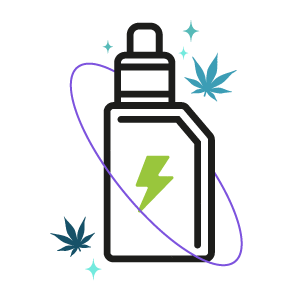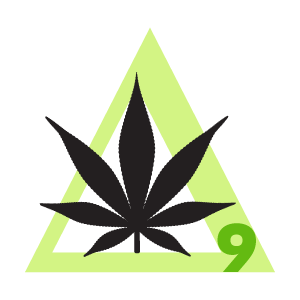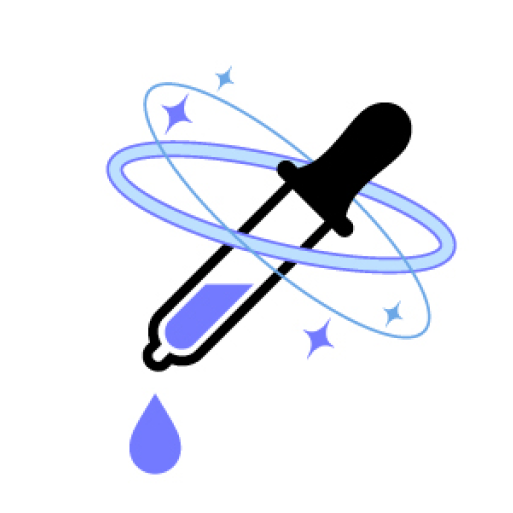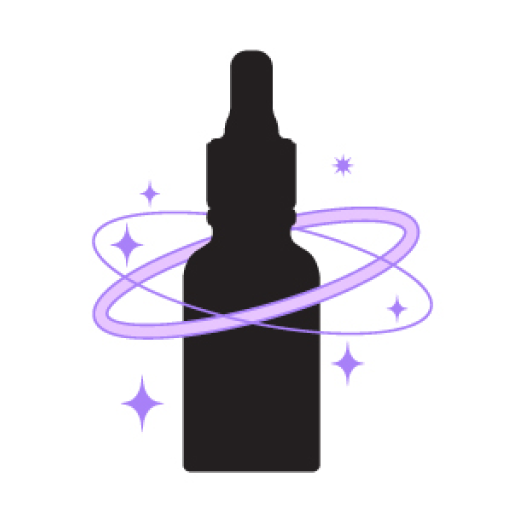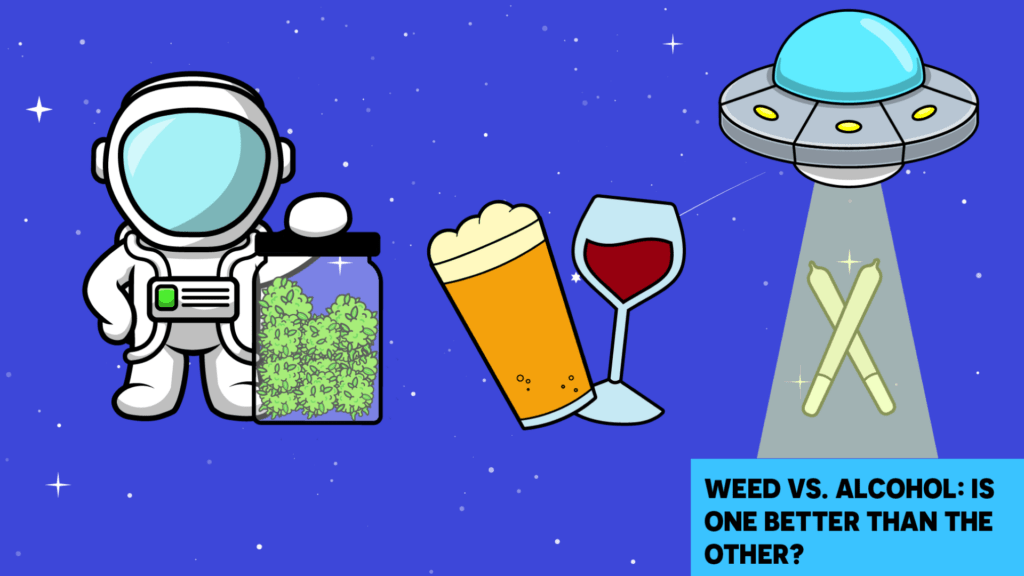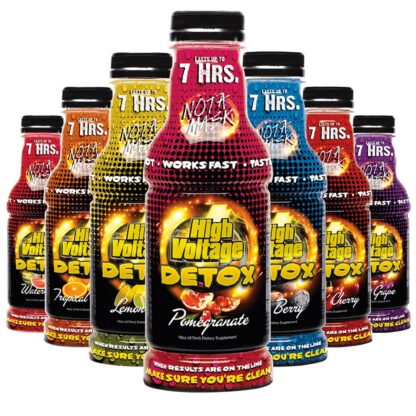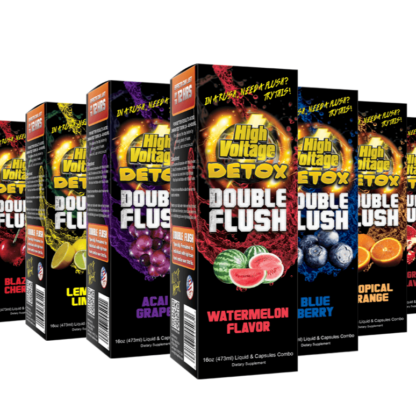Complete Guide to Detoxing from Weed—Steps, Timeline, & Options
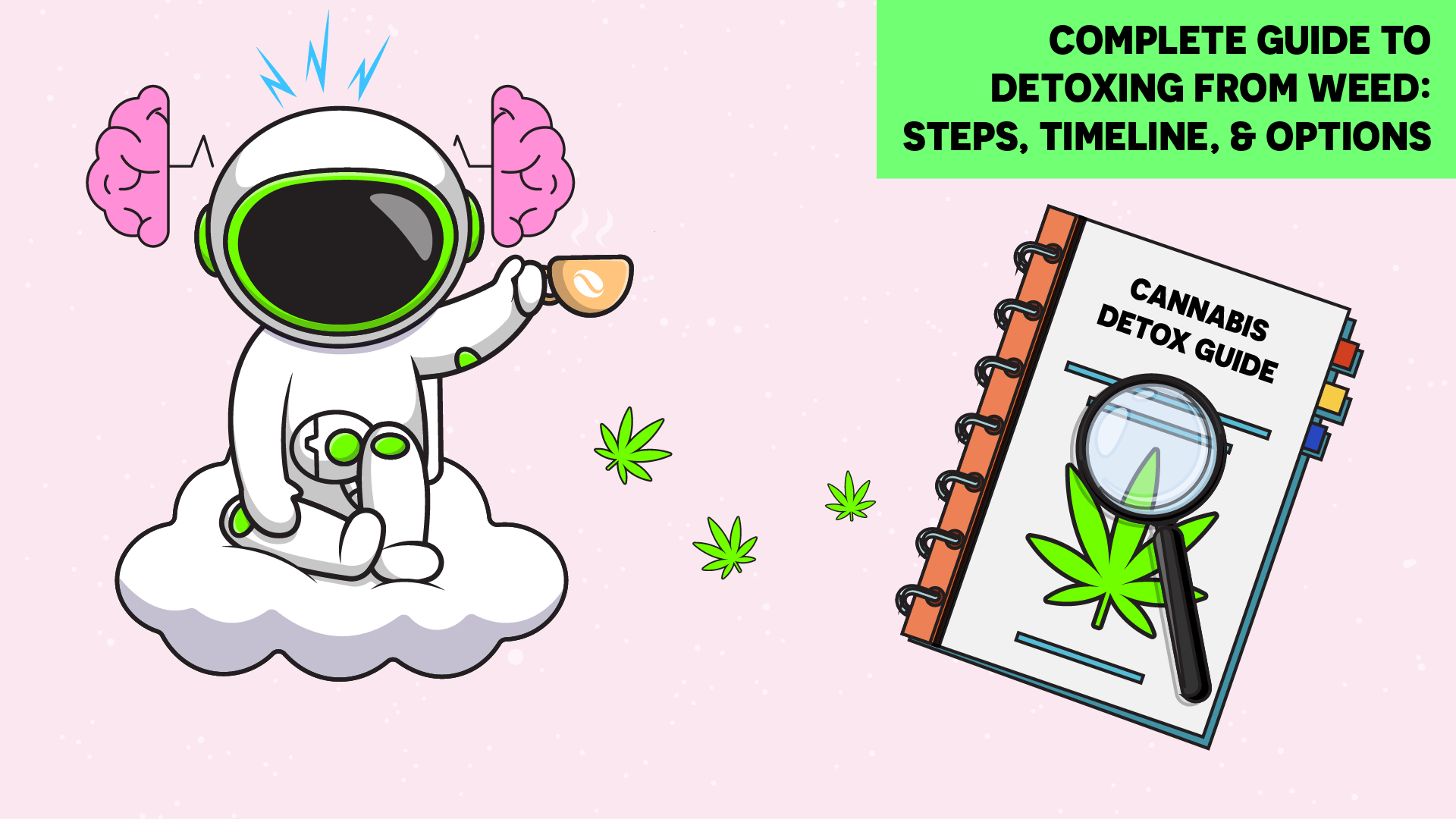
If you’re considering quitting weed or want to take a break, you’re not alone. Detoxing from weed is a common step for many people who want to reset their system, improve their health, or address any issues related to cannabis use. But what does this process involve? In this guide, we’ll dive into everything you need to know about detoxing from weed.
We’ll start with;
- What exactly is weed?
- How does it affect your body and mind?
- How long does a weed stay in your system?
- Why is detoxing necessary?
- Do you really need to detox?
- What symptoms might you experience during withdrawal?
We’ll also look at various detox options available today in the market and provide a clear picture of how long the detox process usually lasts. By the end, you’ll be well-informed and ready to confidently tackle your detox.
What is Weed?
Weed, aka cannabis or marijuana, is a plant used for both recreational and medicinal purposes. It originates from Central or South Asia and has been used for centuries in various cultures. In many other parts of the world, weed can also be called pot, grass, ganja, hashish, or hemp, depending on the local culture and language.
The plant contains a mix of chemicals, with over 480 known compounds. The primary psychoactive component is tetrahydrocannabinol (THC), which affects the brain and alters mood.
Another important compound is cannabidiol (CBD), which has different effects and potential medical benefits. You can utilize it in various ways, including smoking, vaping, eating, or as an extract. However, the plant’s effects can depend on the method of consumption and the individual’s experience with it.
Weed is legal in many parts of the world, with distinct laws for its recreational and medicinal use.
Is Weed Addictive?
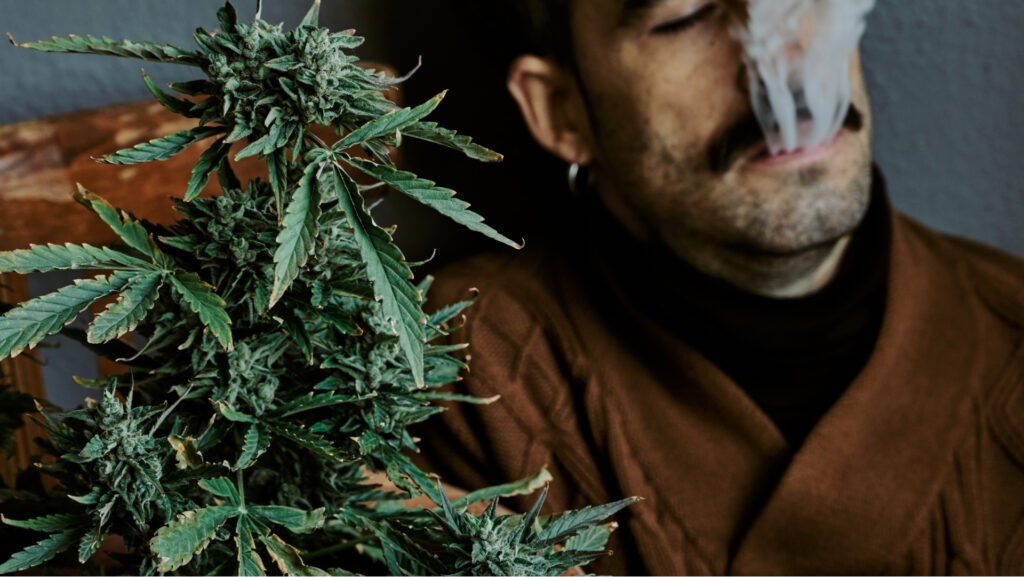
Well, NIDA says 30% of people who use weed may develop signs of addiction. This means that some people can become physically dependent on the drug.
Experts use the term Cannabis Use Disorder rather than addiction to describe unmanageable weed use. People with CUD may find it hard to stop using weed despite its impact on their daily responsibilities and relationships.
Signs of cannabis use disorder include:
- Using more weed over a more extended period than intended.
- Neglecting important responsibilities like work, family, or home care due to weed use.
- Continuing to use weed despite problems with loved ones, health issues, or mental health concerns.
Not everyone who uses weed regularly has a CUD. However, if someone’s use is causing problems, and they continue using despite these problems, they need help. Chronic use of weed can also lead to physiological dependence, meaning withdrawal symptoms may occur when trying to quit or cut back.
What are the Effects of Using Weed?
Weed has a range of effects on the body and mind, depending on the method of use, dosage, and individual response. The effects are felt through a complex process involving the interaction of cannabinoids (compounds in cannabis) with the body’s endocannabinoid system.
When weed is smoked or vaporized, THC quickly enters the bloodstream through the lungs. Then, it goes to the brain and other parts of the body.
When you consume weed in edible or capsule form, cannabinoids are absorbed through the digestive system, which takes longer to process. They are then metabolized by the liver before entering the bloodstream—delaying the onset of effects but can prolong their duration.
THC and/or other cannabinoids bind to receptors in the brain and throughout the body. The two types of receptors are CB1 (in the brain) and CB2 (in the immune system).
When cannabinoids bind to CB1 receptors, they influence the release of neurotransmitters like dopamine & norepinephrine. This modulation affects mood, perception, and other functions.
Here’s an overview of its effects;
- Euphoria [described as a high]
- Altered perception like time, space, and sensory experiences
- Heightened enjoyment of food and increased hunger
- Enhanced creativity and a greater appreciation of music and art
- While some feel relaxed, others may experience anxiety or paranoia, especially in unfamiliar settings or with high doses
- Raised heart rate and, in some cases, causes fluctuations in blood pressure
- Sense of muscle relaxation and changes in body temperature perception
- Short-term use can impair memory and attention, affecting daily tasks and learning
Most side effects of cannabis are temporary and manageable.
- One of the most common side effects is a dry mouth, often called cottonmouth. This can make your mouth feel parched, but drinking water or chewing gum can help.
- You might notice your eyes becoming red or bloodshot. This happens because cannabis can cause the blood vessels in your eyes to expand. It’s harmless and usually clears up shortly.
- In rare cases, high doses of cannabis can cause temporary feelings of paranoia or hallucinations. This usually passes after the effects of the drug wear off.
People often use weed with other substances like alcohol, which can enhance impairment and risks that come with it. Combining drugs can complicate the effects and increase health concerns.
How Long Does Weed Stay in Your System?
The duration that weed (THC) remains detectable in your system depends on various factors including the frequency of use, individual metabolism, body fat percentage, the type of drug test used, and much more.
Urine Tests — Weed can be detected for 3 days to 45-90 days.
Blood Tests — Weed can be detected for 1-2 days to 25 days.
Saliva Tests — Weed can be detected for 24-72 hours up to 1 week, though it generally clears within a few days.
Hair Tests — Weed can be detected for up to 90 days or more.
Do You Need to Detox from Weed?
Well, if you are a regular weed user, you might notice that your tolerance levels increase over time. This means you may need to use more of the substance to achieve the same effects you once experienced with smaller amounts. A detox can help reset this tolerance.
As seen, weed comes with risks, and its effects can impact both the body and mind. Over time, some individuals may develop addiction, leading to Cannabis Use Disorder (CUD).
Many individuals are coming clean nowadays due to reasons like job requirements, health issues, or to make a positive life change, especially when they realize that weed use is impacting their physical or mental health.
Many employers nowadays require drug tests, and detoxing is necessary to pass these tests.
That’s why detoxing from weed now and then is necessary for maintaining a healthy and balanced life.
Some Common Weed Withdrawal Symptoms
When you decide to quit using weed after regular use, you might experience some withdrawal symptoms. They can differ in intensity and duration, but here are some common ones;
- Irritability
- Sleep Disturbances
- Changes in Appetite
- Anger/Aggressive Behavior
- Weight Loss/Gain
- Nervousness
- Fever, Chills, and Sweating
- Anxiety and Depression
- Headaches and Nausea
- Stomach Discomfort
- Cravings
- Difficulty Concentrating
- Fatigue
It’s important to remember that while these symptoms can be uncomfortable, they are generally temporary. With time, they will lessen, and you will feel better.
Detox Options for Marijuana/Weed
Well, that’s a great decision, if you’re here.
Detoxing from weed involves eliminating the presence of THC from your system. There are several methods available, from natural detox techniques to the use of detox products.
Medical Detox
This is a structured process where healthcare professionals help you gradually stop using weed. The goal is to clear the substance from your system while minimizing withdrawal symptoms. This method allows the body and mind to adjust more comfortably.
Once withdrawal symptoms start to improve, a medical team can guide you through any additional treatments or support you might need. Many people choose to continue their recovery in a rehab center, which can offer the best chance of staying sober and preventing relapse.
Tapering Down
If weed use is legal in your area and you have a prescription, doctors might use a tapering-down method. This involves slowly reducing the amount and frequency of weed use over time. By gradually lowering THC levels, the brain can adjust more quickly, making withdrawal symptoms less severe. However, in most detox programs, weed use is stopped immediately, and non-narcotic medications are used to ease discomfort.
Self-Detox
It’s important to get expert advice before starting your detox. A healthcare provider or addiction specialist can evaluate your needs, offer medical guidance, and help create a personalized detox plan.
Some people can manage detoxing from weed on their own, but it’s important to be cautious. For those who need extra help, doctors can prescribe medications to relieve withdrawal symptoms. For example, metoclopramide or promethazine can address nausea and vomiting, while paracetamol or ibuprofen can relieve headaches and muscle pain.
Detox Kits and Pills
While detox kits and pills are available and often marketed to help pass drug tests, their safety and effectiveness are questionable. Sometimes, products like detox drinks for weed are not well-regulated and can sometimes cause adverse effects. That’s why you need to check out reputed products on the market. If you need to pass a drug test, consult a doctor or a substance abuse treatment center for safer options.
Detoxing from weed is a challenging process that requires proper support and care. Professional help, self-care, and a supportive community can significantly improve your chances of successfully quitting and maintaining sobriety.
Here are some tips for you;
- Remove weed and related items from your home so that it reduces the temptation and helps create a focused recovery space.
- Choose a specific date to quit. It will help you mentally prepare and organize your life during detox.
- Engage in activities like exercise, meditation, and new hobbies to distract and support your mental well-being.
- Take hot baths that help relieve physical pain and promote relaxation.
- Reduce or cut out caffeine that will help with anxiety and sleep disturbances.
- Drink water and eat nutritious foods to ease withdrawal symptoms and support your body’s healing process.
- Join support groups that offer encouragement and connect you with others in similar situations.
- Physical activity can manage stress, improve mood, and reduce withdrawal symptoms. Choose an exercise you enjoy and make it a consistent routine.
How Long Does Detox From Weed Last?
Withdrawal symptoms often last about 2 to 3 weeks, gradually easing. So, what exactly influences how long weed stays in your body? Here are several factors including;
- Frequency and amount of use
- Individual health and metabolism
- Support and treatment
- Oral hygiene
- THC potency
Initial Phase (Day 1-3)
- Withdrawal symptoms usually start within the first day after quitting.
- This period is typically when withdrawal symptoms are at their worst.
- Cravings for weed are usually strongest, and the risk of relapse is higher.
- You might also experience physical symptoms like sweating, chills, and stomach pains.
Early Recovery (Days 4-14)
- Over the next couple of weeks, symptoms typically begin to improve.
- However, psychological effects such as cravings and depression may persist as the brain adjusts to functioning without THC.
- Some lingering symptoms like mood swings or cravings might still occur.
Long-Term Recovery (Day 15 and Beyond)
- Most physical symptoms should have diminished by the end of the third week.
- However, if you have a strong psychological dependence, you may experience anxiety or depression for several months.
Detoxing from weed is a process that requires patience and support. Understanding the general timeline and being prepared for the symptoms can help you overcome the withdrawal more effectively.
Ready to Detox From Weed?
Detoxing from weed is an important step if you want to manage your health and addiction. The process can depend on your needs and the level of dependence. Whether you choose a medical detox with professional support or a gradual reduction method, the goal is to ease off weed in your system and handle withdrawal symptoms more comfortably. While some people can detox on their own, medical guidance and medications can make the process smoother.
Consulting with a healthcare professional can guide your situation and ensure you’re taking the safest and most effective steps toward recovery. Ultimately, detoxing is about taking control of your health and making positive changes for the future.
Frequently Asked Questions
Q. Do Detox Drinks For Weed Work?
Detox drinks can help flush THC[weed] from your system, but their effectiveness can vary. It’s important to choose reputable products and follow the instructions carefully. Most detox drinks start working within a few hours and can provide a window of time (usually 3-5 hours) during which your urine is clean of THC.
Q. How Can You Detox From Weed? Are There Any Specific Foods?
Foods rich in antioxidants, fiber, and vitamins can support the body’s detoxification process. Examples include fruits, vegetables, and whole grains.
Q. Can I Detox From Weed In A Week?
It’s possible for occasional users, but regular or heavy users may need more time to detox fully. To fully detox, you should abstain from weed for at least a few weeks, depending on your usage patterns.
Q. How Long Does Weed Stay in Saliva?
Saliva tests, oral fluid tests, and mouth swabs are commonly used to detect recent drug use. These tests are noninvasive and provide quick results, making them popular for workplace drug testing, roadside checks by law enforcement, and other scenarios requiring immediate detection. For occasional users, weed can be detected in saliva for up to 24-72 hours. For regulars, it can be detected for up to a week.

